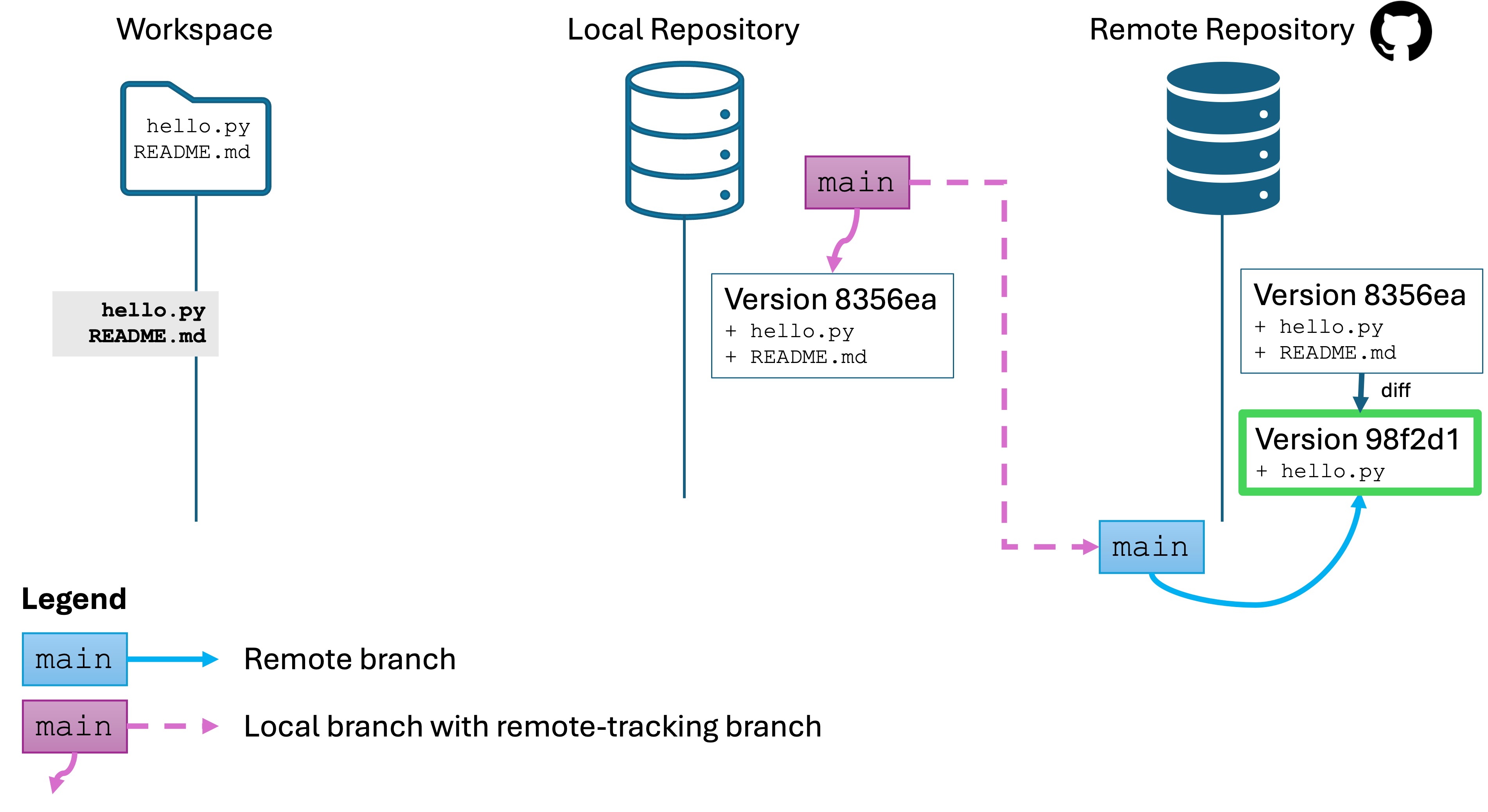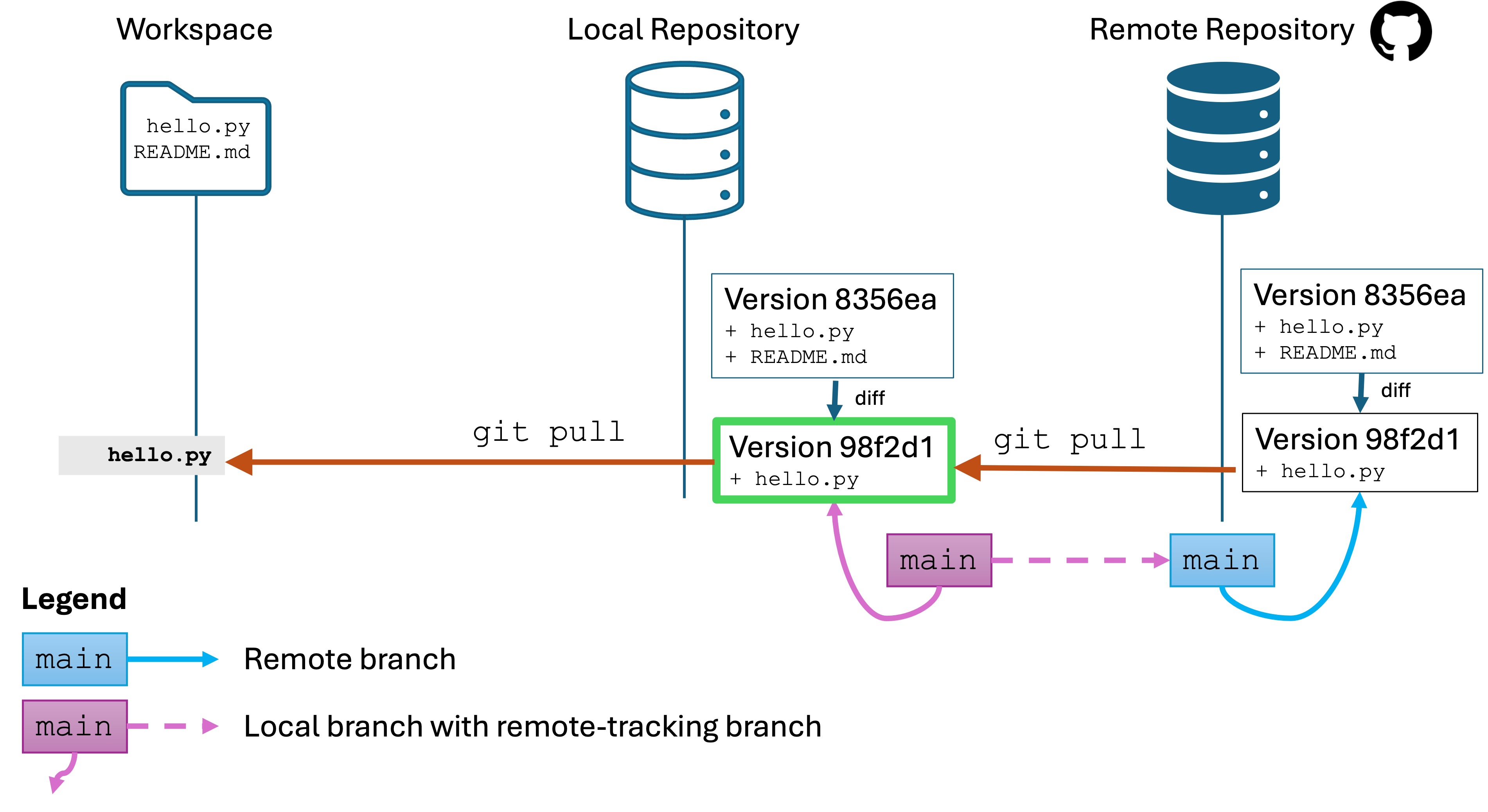Scenario 3 - Retrieving changes
Scenario: Your started work on an assignment in the computer lab and pushed your changes to the remote. You went home and cloned the repo, worked some more, then pushed your changes to the remote. Now you are back in lab, and you need to get the latest changes from the remote. Or, perhaps a teammate pushed changes to the remote and you need to retrieve them.
Remote changes
I will make some changes to and push them, so the repos now look like this:

The remote repo has a new version, but your local repo is not up-to-date. You need to manually retrieve the changes. This is a good thing! You don’t want changes to automatically be applied whenever someone else on your team sends them to the remote repo. They could conflict!
Super important point
Before you retrieve changes from the remote, you almost always want to either:
- Stage and commit any unsaved changes you have.
- Undo, reset, or discard any uncommitted changes you have. Ideally, you should have a “clean” workspace before you retrieve changes. It will make life easier on you.
git pull
Run the command git pull. A few things happen:
- The changes from the remote repository on the active branch,
main, are fetched and integrated into your local repo. - Any changes are automatically merged into your workspace. This is why we wanted our workspace to be “clean.”

You now have the most recent version of main in your workspace. you are ready to edit it, commit, and push as usual.
Concurrent changes to the local and the remote
All of this is relatively straightforward when you are the only one working on a project. The version history of branches remains somewhat linear: you are the only one committing, pushing, and pulling, so you are always (probably) working on the latest version.
Life gets considerably more challenging when you have a team of developers all pushing and pulling from the same repo. If you commit a change to main to your local repo, but then Bob pushes a new version of main to the remote repo, what happens when you try to push or pull? Git will protect us from losing work, but we will likely end up with merge conflicts.
Team coordinator through Git remote repos can be smooth if we follow a good process. We will discuss this next.
Knowledge Check
- (Question) What does the
git pullcommand do? - (Question) Why is it important to have a “clean” workspace before running
git pull? - (Question) What happens if there are conflicting changes on the local and remote repositories when using
git pull? - (Challenge) Create a scenario where you make changes locally and have conflicting changes on the remote repository. Use
git pulland resolve any conflicts. - (Challenge) Demonstrate how to ensure your workspace is clean before pulling changes.